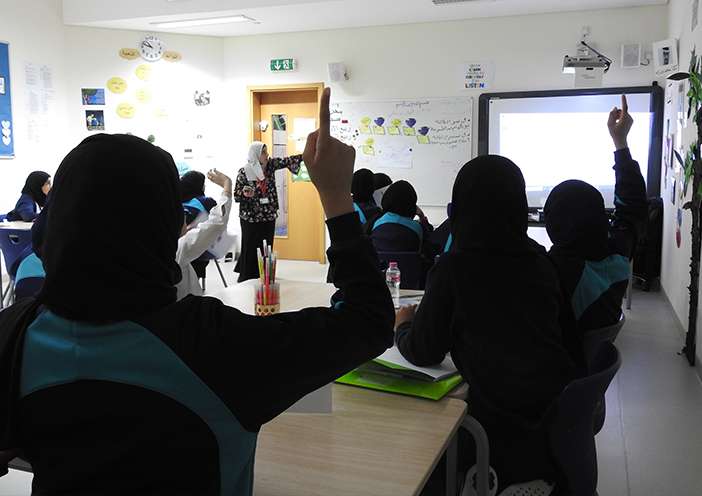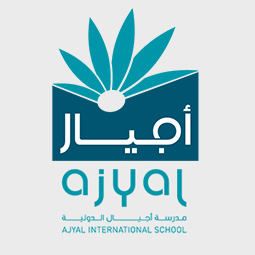Students need to collaborate with their peers; receive timely feedback and encouragement from teachers, and be able to question and try out ideas in front of a group. In addition, the school campus is packed full of stimulating physical resources and specialist equipment that help bring the curriculum to life.
The Distance Learning plans developed at AJIS acknowledge these challenges but aim to overcome them, as far as possible. To do this, we are making full use of available technology and, most importantly, leveraging the strong student-teacher relationships and home-school partnerships that have been established over time in our normal operation.
The aim of Distance Learning is to provide continuity in learning and pastoral support, in order to minimize the impact of our campus closure and ensure that the transition back to the physical classroom is as seamless as possible.

One of the attributes of the AJIS Learner Profile is 'Resilient Inquirers'. In the Distance Learning situation, this becomes particularly meaningful. Ajyal Learner (Teacher and Student!) is resilient in the face of setbacks and challenges and will apply their skills, knowledge, and creativity to ensure that they continue their learning journeys.
Distance Learning is a team effort. We are proud of what we have achieved during the Covid-19 crisis. However, every member of the community will have a greater appreciation for the physical campus once we return!
AJIS has been Evaluated As "Developed" in the Distance learning Evaluation Program, carried out by the Department of Education and Knowledge "ADEK", Irtiqaa, in Abu Dhabi
Both students and families value structure and routine. All age groups have a daily schedule that closely aligns with a normal school day. For Infant School children, who need adult support for many of their learning tasks, there is more flexibility and choice so that families can create their own schedules to suit their particular situation. In the Junior School, children are more independent and are expected to follow the school day closely (8:00 AM to 3:00 PM ) but there is still flexibility for breaks to fit in with family routines.
Senior School students follow the normal timetable of lessons. However, the timings have been modified to give them a later start in the morning (8:45 rather than 7:45) and a later finish (3:30 or 4:20 rather than 2:55 or 4:00). This gives a staggering start to families with younger children at home. Lessons have also been shortened to 50 min rather than an hour, with 10 min breaks between every lesson. This is in recognition of the increased screen time, ensuring that students can have movement and screen breaks between every lesson.
A classroom is a space where teaching and learning can take place. It has the resources the students need; it is a place where teachers can explain objectives or concepts - or give feedback on classwork and provides a setting where students can work on tasks independently or in groups while being monitored by a teacher. In each part of the school, we have created virtual classrooms using platforms that are already familiar to students and teachers.
In the Infant School, daily resources for each year group are made available to parents through an online portal. ClassDojo, Literacy Planet and Microsoft Office 365 (TEAMS) is the key platform for teachers to share specific instructions with the children through daily, pre-recorded video messages that can be accessed at any time. Class Dojo and TEAMS allows children to easily upload examples of their learning in almost any format – creating a digital portfolio. Children, parents, and teachers can all comment on the learning – reinforcing the partnership between home and school as well as ensuring that the learning is interactive.
In the Junior School, TEAMS And Google Class Room is used in the same way - as a platform to submit work and receive individual feedback. But in addition, Google Classroom is used as the main virtual space for teacher-class communication. Each class and specialist group has its own 'classroom' where assignments are set, with instructions given through presentations, pre-recorded video or screencasts. Students can post questions or share their ideas within the classroom and the teacher monitors this space closely.
In the Senior School, the main virtual classroom spaces are the Microsoft TEAMS AJIS portal that is set up for every class. These are extremely powerful tools – essentially fulfilling the functions of a traditional textbook; classroom whiteboard and individual student exercise book in one platform. Students can access all the resources they need – including teachers 'screencasts' whiteboard notes and narrated presentations – and their own notebook pages that are only visible to themselves and the teacher. Both teachers and students have pen-enabled devices, so work can easily be annotated, just as in a traditional exercise book. Teachers can also record voice messages on the OneNote page to give more detailed feedback.
Video conferencing platforms (Google Meet and Microsoft Teams) have allowed us to conduct some live teaching sessions with classes and groups of students.
They add value by enabling more natural question and answer sessions in 'real-time', to maintain the strong connection between students and teachers and the sense of belonging to a class group. However, they also have a few disadvantages over other elements of the virtual classroom. Too many live lessons scheduled in a day can be problematic for families with multiple children and parents working from home. Video conferencing with whole class groups can also become impersonal – it is much harder for teachers to keep track of students' expressions and reactions online and ensure that all are engaged. Whilst a video conference format can be useful for teacher explanations, a normal school lesson is much more student-centered; we want to make sure that students are actively participating in lessons as far as possible.
At AJIS, our use of video conferences takes into account these drawbacks. Sessions are short with a specific purpose, to complement other aspects of remote learning. In the Infant and Junior Schools, the majority of sessions are with small groups, so that each student is recognized and contributes. A typical session is a specific learning focus; it feels very much like 'carpet time' in the physical classroom where children gather around the teacher to share ideas and discuss the learning. In the Junior School, each class also has a whole-class 'check-in' with the teacher at the end of the day which again mirrors practice in a normal school day and helps to maintain the class identity.
In the Senior School, a Microsoft Teams group is set up for each subject class, making it very easy for teachers to schedule live meetings during their lesson times as required. Again, these are typically short, targeted sessions within the lesson; introducing a new idea or following up on common misunderstanding from earlier work. The chat function within Teams is used for teacher-class communication at other times.
We have worked hard to ensure that the Remote Learning experiences motivate, excite, and engage our students whilst they are away from the campus. Just as important is to make sure that the curriculum reflects the balance of normal school life. The subjects covered mirror the usual school curriculum, including the creative arts subjects and physical education - here teachers have come up with innovative activities that can be carried out at home. There is a balance of offline and online activity; students can take videos or photographs of 'offline' achievements that can be shared with teachers, so there is plenty of time away from screens.
Physical activity is a real challenge in the 'lockdown' situation but is more important than ever, for both physical and mental health. As well as the scheduled PE lessons and activities, all students are encouraged to plan breaks into their daily schedule and to get fresh air and exercise when they can.

